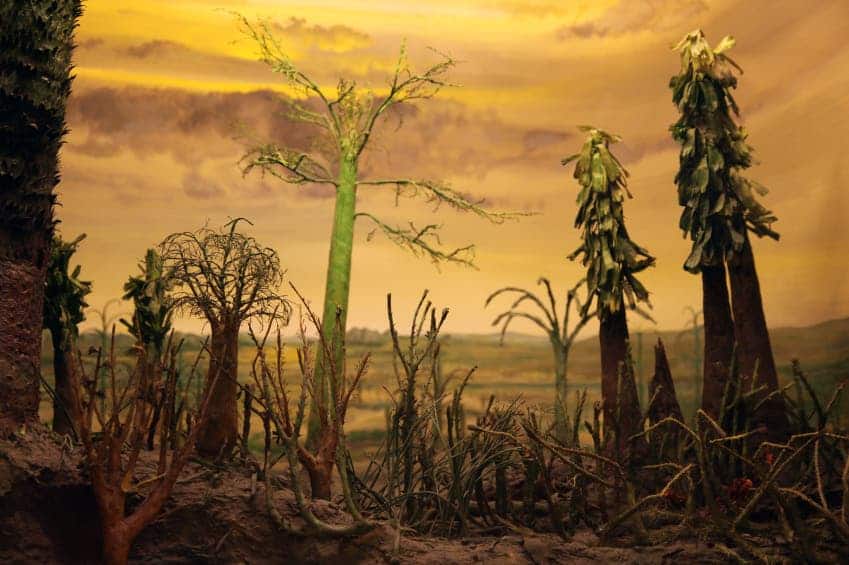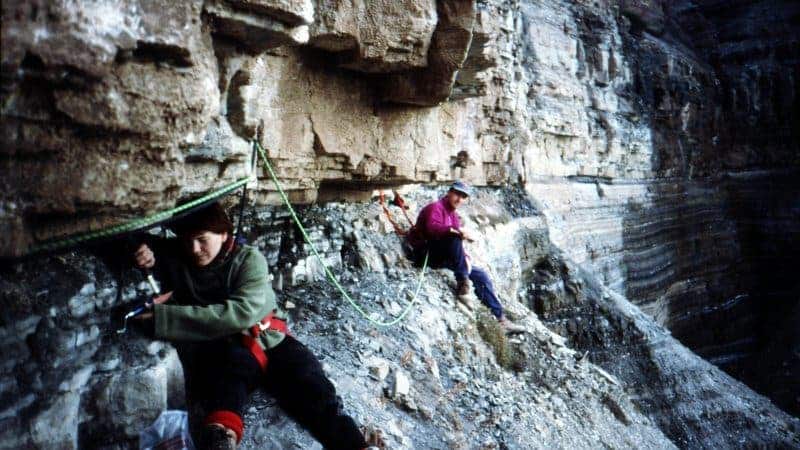The Permian was a geologic period that ended some 250 million years ago, with the largest extinction our planet has known. Geologists have now found evidence that global acidic rain accentuated or was even the main cause for the massive extinction.

The Permian is a geological period from the Paleozoic Era, lasting from 298.9 to 252.2 million years ago. It is the period in which mammals and turtles started emerging, and its end is marked by the largest extinction in the Earth’s history. The extinction wiped out 96% of all marine species and 70% of terrestrial vertebrate species. It is also the only mass extinction of insects. Because so much biodiversity was lost, it took life up to 10 million years to bounce back.
Pinpointing the exact cause or causes of the Permian–Triassic extinction event is difficult because it took place 250 million years ago, and most of the evidence was erased or buried under many layers of earth. Therefore, we don’t really know what happened, but the main theories are asteroid impact and volcanic eruption – we know that the final stages of the Permian had two flood basalt events. Now, this new study has found evidence of massive rain during the Permian extinction, which seems to support the idea of a massive volcanic eruption – but it could also indicate that acidic rains themselves have caused the extinction.
“Our data fits the idea that acid rain caused the microbes to cease functioning,” said Henk Visscher, a paleoecologist at Utrecht University in the Netherlands and a member of the study.
Geologists analyzed rock samples from the Dolomite Mountains in Italy and found evidence of an organic compound called vanillin. Vanillin is most prominent as the principal flavor and aroma compound in vanilla, but it is also an indicator of acidic rain. Their evidence suggests that the soils on land were very acidic – so acidic that they had the potential to destroy entire ecosystesms.

Professor Mark Sephton, co-author of the paper from the Department of Earth Science and Engineering at Imperial College London, said:
“The end of the Permian was a major catastrophe for Earth, which saw nearly all plant and marine life obliterated. Acid rain destroyed the delicate ecosystem on land, making the soils as acidic as lemon juice or vinegar, which killed off nearly everything.”
The rain was so acidic, it was basically vinegar.
“For the first time, we can say that soils from this time had an acidity similar to that of vinegar,” says Mark Sephton, a geologist at Imperial College London whose team will publish the finding in February in the journal Geology.
However, before researchers can say with certainty that this process took place all over the world, they have to analyze samples from other areas in the world. Accessing 250 million year old rocks is no easy feat, but it’s necessary to confirm that this was not only a local situation.
Journal Reference: Terrestrial acidification during the end-Permian biosphere crisis?


